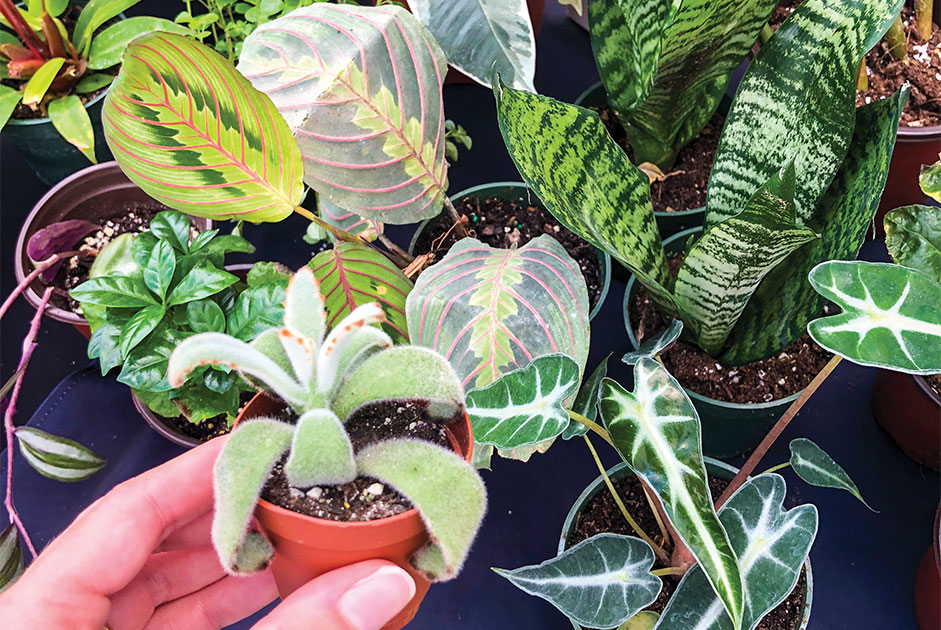 Hi, plant friends! My name is Kelli and my goal is to help more people become plant people (maybe even you!). As the founder and owner of Patiently Rooted, a company dedicated to spreading the word about the benefits of plants, I have always had a love of nature and plants, so starting my business was a natural expansion of my passion.
Hi, plant friends! My name is Kelli and my goal is to help more people become plant people (maybe even you!). As the founder and owner of Patiently Rooted, a company dedicated to spreading the word about the benefits of plants, I have always had a love of nature and plants, so starting my business was a natural expansion of my passion.
Did you know?
Plants have many natural benefits in addition to boosting the decor of a room or home. Plants can help you slow your pace in life down as you admire their beauty, and they can also teach you a lot of patience as you wait for them to grow or come back to life. I have always cherished plants in almost any form because they bring joy to my life. And they can bring joy to your life, as well. I firmly believe that everyone and anyone can become a plant person – you just have to find the right plant!
My BEST recommendation!
The worst thing you can do is get the wrong plant and end up with the wrong outcome. The plant I always feel comfortable recommending is the Sansevieria, also called the snake plant.
 Snake plants might be one of the easiest plants to add to your collection (or start your collection) because of the lack of care they need. They are a hardy plant that can almost be forgotten about, but still bring great qualities into your space. You usually see them in dark spots or even in offices because they don’t require a lot of care or light.
Snake plants might be one of the easiest plants to add to your collection (or start your collection) because of the lack of care they need. They are a hardy plant that can almost be forgotten about, but still bring great qualities into your space. You usually see them in dark spots or even in offices because they don’t require a lot of care or light.
Some people might disagree that this plant is easy to care for, but those same people are probably overwatering it! Snake plants only need to be watered once a month or every six weeks. Even if you left it high and dry while on a long vacation, it would still stay alive.
The beauty and benefits of snake plants.
Snake plants have hard, waxy leaves that are usually in a sword shape, and they offer beautifully colored leaves to brighten up your space. There are also several varieties of snake plants, including golden hahnii, moonshine, and black coral, so take your pick!
Another benefit? Plants can help clean your air by taking in the CO2 from the air and releasing more oxygen into your space – a process you know as photosynthesis. Snake plants perform a special kind of photosynthesis that happens at night, which makes it a great plant for your bedroom. Breathing in new oxygen while you sleep is a wonderful way to wake up refreshed when you hear that alarm clock clanging!

The down and dirty – the “how to” for snake plants:
- Water Schedule:
Snake plants are drought tolerant and don’t like to be watered that often. Native to West Africa and found in the desert, they are used to being dry. I always stick to once a month and test the soil before I water it. If the soil looks a little wet, test it with your finger and see if it’s still moist. If it is, do not water. If it is super dry, it is ok to water! A great rule of thumb for watering your plants is that it’s easier to save a plant from underwatering, rather than trying to save a plant from overwatering. If it is overwatered, most of the time the roots will rot and die off and, if there are no roots, the plant cannot survive.
- Light Requirements:
Snake plants are one of the easiest plants to care for because of their adaptability to light. They can survive in any light source, so they are the perfect plant for beginners. If you stick it in a dark corner or give it almost no light at all, it still grows. If you give it a lot of bright light, it will only grow faster! I would recommend using a snake plant to fill an empty corner in your space to help bring some greenery and life to it.
- Common Issues:
Curling leaves – Even though you can mostly forget about snake plants, they still need water to survive! If the leaves on your snake plant are curling, it means it is actually not getting enough water.
Yellow leaves – If your snake plant is turning yellow, that is a clear indicator of over-watering. Make sure you are waiting until most or all of the soil is completely dry before watering.
Whether you have one plant or ten, a snake plant is always a great addition to your collection. Follow the tips above and you and your plant will be thriving. And don’t forget – let plants teach you patience.





















